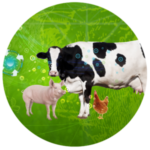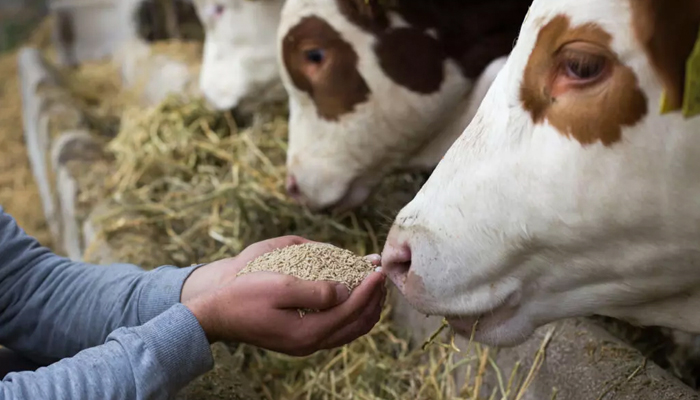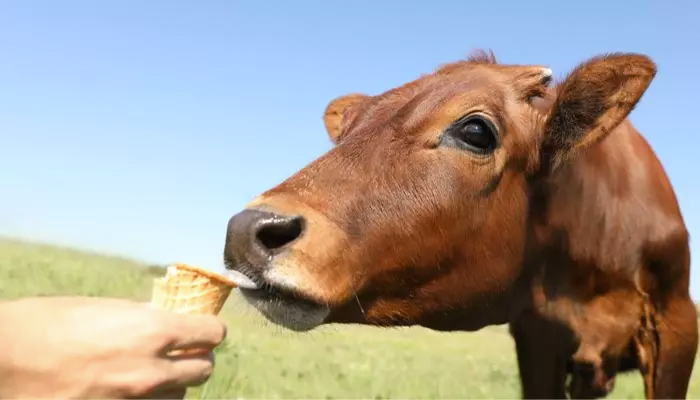
ANIMAL APPETENCE
[LIVESTOCK APPETENCE (OVINES, BOVINES, PORCINES, AVICULTURE] APPETITE STIMULATIONOUR PALATABILITY SOLUTIONS FOR ANIMALS
Our scientific research has enabled us to develop specific sensory formulations and product ranges aimed at meeting the challenges of livestock farming, such as psychosocial stress, feed transitions and palatability problems.
Our solutions can act at different levels to promote the palatability of a farm animal towards a feed. Sensory molecules have amazing properties, discover how they can contribute to support the general condition of animals through our different products.
HOW DOES THE ANIMAL PERCEIVE THE PALATABILITY OF FEED?
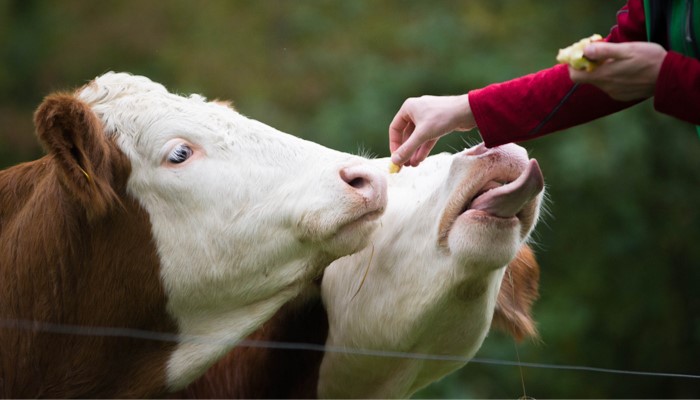
A palatable feed is a feed that will satisfy the natural preferences of animals. Different parameters come into play: the texture of the feed, its appearance, its flavor.
Several dimensions are involved in the flavour (commonly called “taste”):
- the flavors (five in number),
- the trigeminal sensation (pungent, burning, astringent…),
- the somesthesia (allows to feel the consistency, pressure),
- aroma (retroolfactory stimulation induced by the olfactory molecules released by chewing and which go up the back of the nose through the nasal cavity. Have you ever noticed that your meal has “no taste” when your nose is blocked?!)
Very often and by habit, when we talk about taste, we mean flavors and aroma.
HOW DOES THE ANIMAL PERCEIVE THE PALATABILITY OF FEED?
SMELL
The first contact between an animal and its feed is the smell. The smell is perceived by the olfactory epithelium present in the nose. Ruminants and pigs have about 100 cm², poultry about 5 cm². For comparison, humans have around 9 cm². The importance of the smell becomes obvious, as it is well perceived by animals.
ASPECT
The second step, the physical aspectof the feed , the size of the pellets, the hardness of the pellets… So many elements that the feed manufacturer masters to meet the preferences of the animals, according to their physiological stage or the species.
TASTE
Finally the best for the end, the flavor, or more commonly “the taste”! Flavors are perceived thanks to the taste buds (present on the tongue). With more than 25,000 taste buds, ruminants are the great champions, followed closely by pigs with about 20,000 taste buds. Poultry comes next, with about 300 taste buds (for comparison, humans have about 7,000).
WHY IS FEED PALATABILITY IMPORTANT?
A poorly consumed feed is an expense that is not valued and a ration that becomes unbalanced. Why is it that feed is consumed incorrectly?
There are two types of causes:
- causes “external” to the feed: thermal stress, psychosocial stress, poor health, …
- causes “internal” to the feed, i.e. palatability: taste, smell, physical aspect of the pellets, etc.
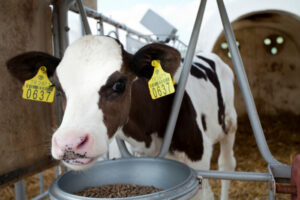
The appearance of the feed, the hardness of the pellets, their size, etc. are parameters perfectly mastered by the feed manufacturer.
As for the taste and smell of the feed, the profile will depend on the raw materials (with all the variability that accompanies them depending on the year of harvest or the region for example), the presence of minerals or vitamins, oil…
Although precisely formulated to meet the nutritional needs of each physiological stage and according to the production, the final result in terms of taste or smell does not necessarily correspond to the expectations of animals, these super gifted of taste and smell! A little help is often needed.
HOW TO INCREASE THE PALATABILITY OF FEED?
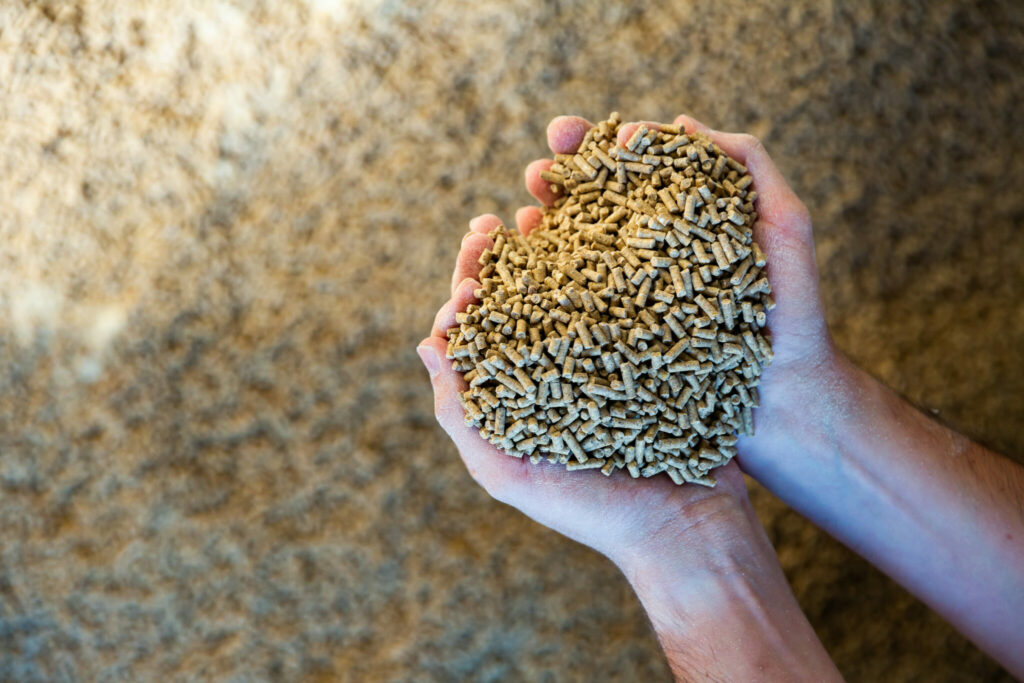
The formulation allows the manufacturer to control the nutritional balance of its feed. Ensuring a good feed intake is an essential condition for the feed to deliver all its benefits. Ensuring the palatability of the feed is therefore essential.
For the smell, the functional flavors allow to adapt it to each species and to the feed in question. TheCristalfeed range offers a wide choice to meet different situations.
For flavors, it is interesting to work with the sweet flavor, the only one that does not have a repulsion threshold (for example, a handful of salt in excess and the dish becomes inedible, it is the same for animals). The Oseo range makes it possible to provide the sweet taste while taking a minimum of space in the composition of the feed.
DISCOVER OUR ARTICLES
POURQUOI L’INGESTION EST-ELLE ESSENTIELLE DANS L’ÉQUILIBRE NUTRITIONNEL D’UNE RATION ?
Les aliments sont formulés sur la base de l’équilibre nutritionnel. Les performances quant à elles reposent sur : la génétique, la gestion de l’élevage, …, et sur l’ingestion d’aliments équilibrés…
ELEVAGE ET PLAISIR DE MANGER : ANTHROPOMORPHISME OU RÉALITÉ ?
Les animaux d’élevage prennent-ils du plaisir à manger ? Est-ce uniquement une lubie, liée à l’anthropomorphisme et à cette notion sociale du repas ? Le plaisir de manger peut-il améliorer les performances de l’élevage ?
CONSOMMATION ET REFORMULATION DE L’ALIMENT, POURQUOI SONT-ELLES PARFOIS EN DISCORDANCE ?
La formulation d’un aliment est au service des performances des animaux : leur apporter un aliment équilibré, dont la consommation leur apportera tous les éléments nécessaires et au bon dosage, pour répondre à leurs besoins et assurer leur production.


